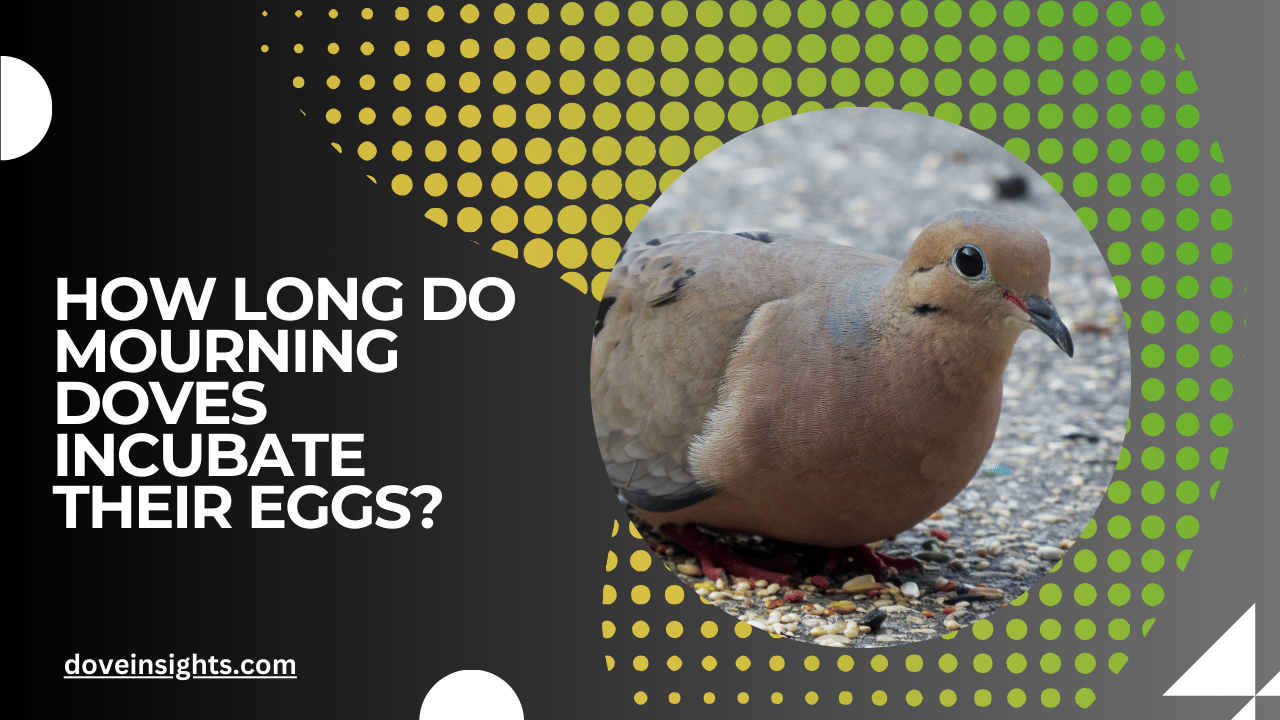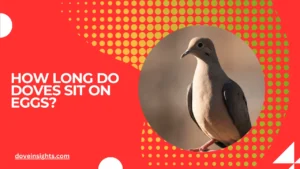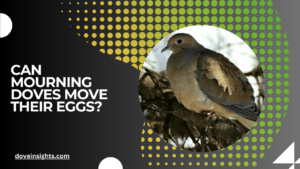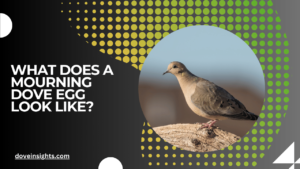The gentle coo of a mourning dove often evokes a sense of calm and peace, but behind their serene presence lies a fascinating and intricate process: the incubation of their eggs.
For those who are curious about the inner workings of nature, understanding how long mourning doves incubate their eggs is not only intriguing but also an essential part of their reproductive cycle.
As symbols of love and peace in many cultures, these birds’ nesting habits are as delicate and precise as their melodious calls.
Mourning doves, like many other bird species, invest significant time and energy into ensuring the survival of their young. The incubation period, although relatively short compared to other species, is a critical phase in the life cycle of these birds.
But how long does it really take for mourning doves to bring their eggs to hatching? What influences this process, and what roles do both the male and female doves play during incubation?
This article will take an in-depth look into the fascinating world of mourning dove incubation, examining the length of the process, the factors that influence it, and the behaviors surrounding this vital stage.
Whether you’re a bird enthusiast, a nature lover, or simply curious about these beautiful creatures, understanding their incubation period will deepen your appreciation for their survival and reproductive strategies.
Contents
- 1 The Incubation Period of Mourning Doves
- 2 The Roles of Male and Female Doves in Incubation
- 3 Factors That Affect Incubation Duration
- 4 Behavior During Incubation
- 5 The Hatching Process and Beyond
- 6 Conclusion:
- 7 FAQ’s
- 7.0.1 How long do mourning doves incubate their eggs?
- 7.0.2 Do both parents incubate the eggs?
- 7.0.3 What affects the incubation period of mourning doves?
- 7.0.4 How do mourning doves keep their eggs warm during incubation?
- 7.0.5 What happens after the eggs hatch?
- 7.0.6 How do mourning doves protect their eggs during incubation?
The Incubation Period of Mourning Doves
Mourning doves have a relatively short incubation period, typically lasting about 14 to 15 days. This brief but crucial stage in the reproductive cycle ensures that their young are born with enough time to grow and develop before the harsh conditions of winter set in.
Once the female has laid her eggs, both the male and female mourning doves take turns incubating them. The eggs are small, white, and soft, and the parents’ primary role during this time is to keep them warm and protected.
The temperature is critical, as the embryos inside the eggs require consistent warmth for proper development.
Interestingly, mourning doves do not have a brooding patch like other bird species. Instead, they rely on their feathers to regulate the temperature of the eggs. Both parents will often stay near the nest, sharing incubation duties.
The male typically incubates at night, while the female incubates during the day. This shared responsibility helps ensure that the eggs are kept at the right temperature throughout the 24-hour cycle.
The Roles of Male and Female Doves in Incubation
While both male and female mourning doves contribute to the incubation process, their roles are distinct but complementary.
The male mourning dove is often the primary incubator at night, ensuring that the eggs remain warm during cooler evening temperatures. The male’s dedication during the nighttime hours ensures that the eggs don’t cool too much while the female rests.
On the other hand, the female mourning dove typically handles the daytime incubation. She will remain on the nest for most of the day, keeping the eggs safe from predators and protecting them from environmental threats.
Both parents share the responsibility of turning the eggs regularly, which is crucial for the development of the embryos inside.
The coordination between the male and female is essential for the success of the incubation period. This teamwork allows for a constant presence on the nest, minimizing risks such as predation or egg exposure to the elements.
Additionally, both parents provide the necessary care and attention to their future offspring, ensuring their survival once hatched.
Factors That Affect Incubation Duration
While the standard incubation period for mourning doves is about 14 to 15 days, several factors can influence the exact duration. These include temperature, weather conditions, and the overall health of the parents.
- Temperature plays a significant role in the incubation process. If temperatures drop significantly, the parents may need to incubate the eggs for longer to ensure they stay warm enough to develop properly. In colder weather, the eggs may take a little longer to hatch, as the parents work harder to keep the eggs at the right temperature.
- Weather conditions such as rain, snow, or high winds can also disrupt incubation. In some cases, mourning doves may need to abandon their nests temporarily to seek shelter, leading to potential delays in hatching. However, the parents are generally quite resilient and will continue incubating when possible.
- The health and age of the parents can also influence the incubation process. Younger, less experienced doves may take longer to learn how to regulate the temperature of their eggs, potentially leading to a slightly longer incubation period. Likewise, older or weaker doves may find it harder to maintain a consistent incubation routine, which could affect the timing of the eggs hatching.
These factors demonstrate the complexity of the incubation process and the adaptability of mourning doves in response to environmental pressures.
Behavior During Incubation
During the incubation period, mourning doves exhibit specific behaviors to ensure the safety and well-being of their eggs.
As mentioned earlier, both parents share the duties of incubating the eggs. However, they also engage in other critical activities, such as nest defense and communication.
- Nest Defense: Mourning doves are highly protective of their nests. If they sense a threat, such as a predator or intruding bird, they may aggressively defend their territory. The male, in particular, may display threatening postures or use his cooing calls to ward off potential dangers.
- Communication: Mourning doves are known for their cooing sounds, which are often used for communication. During incubation, the parents will coo to each other, maintaining a strong bond and signaling when it’s time for the parent to switch places. This helps prevent stress during the incubation period, ensuring that both parents are in sync with their responsibilities.
- Feeding and Resting: While one parent is incubating, the other will leave the nest to forage for food. Both parents eat a diet that consists mainly of seeds, which provides them with the energy needed to keep up with their incubating duties. The parents also ensure they rest and recuperate to avoid exhaustion.
These behaviors highlight the commitment and responsibility that mourning doves exhibit throughout the incubation period.
The Hatching Process and Beyond
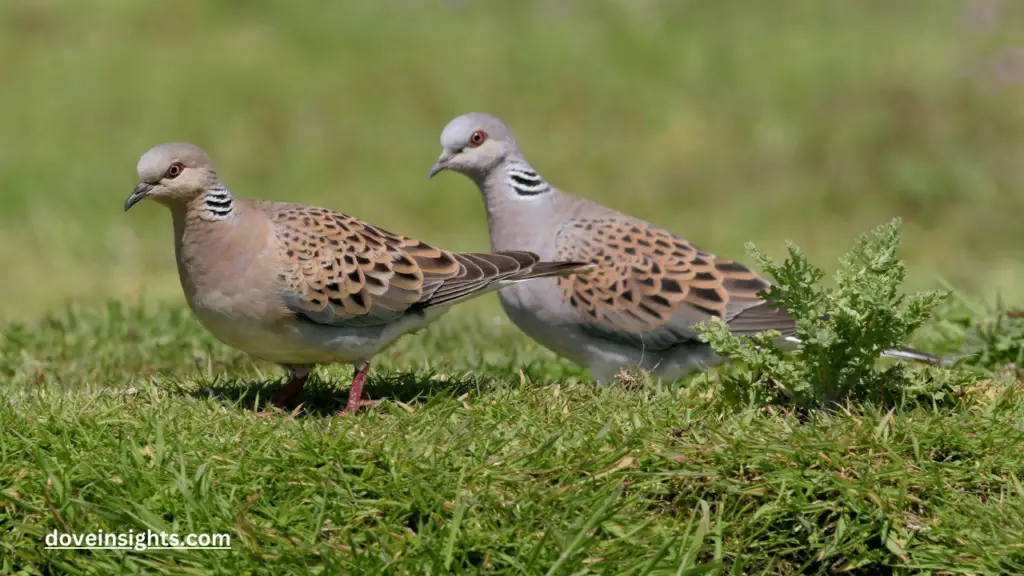
After approximately 14 to 15 days, the eggs will begin to hatch, marking the end of the incubation period. The hatching process is gradual, and it can take a few hours for the chicks to break free of their shells.
The hatchlings, or squabs, are born naked, blind, and incredibly vulnerable, which means the parents must continue to care for them immediately after hatching.
Upon hatching, the parents continue their nurturing duties, feeding their young with a special secretion known as pigeon milk.
This nutritious substance is produced in the parent’s crop and is regurgitated to feed the chicks. The parents will continue to care for their offspring for several weeks before they are ready to leave the nest.
Conclusion:
The incubation period of mourning doves, lasting around 14 to 15 days, is a brief yet crucial time in their reproductive cycle.
During this time, both the male and female mourning doves work in unison to ensure that their eggs are kept warm and safe, even under challenging environmental conditions. Their commitment to parenting, teamwork, and adaptability plays a significant role in the survival of their offspring.
While the incubation period may seem short, it is packed with complex behaviors and adaptations that ensure the success of the next generation of mourning doves.
Understanding the length and nature of their incubation process enhances our appreciation for these birds and their remarkable ability to nurture life.
As we continue to observe and learn from mourning doves, we are reminded of the profound connections between nature, survival, and the incredible efforts that parents make for the next generation.
FAQ’s
How long do mourning doves incubate their eggs?
Mourning doves incubate their eggs for about 14 to 15 days before they hatch.
Do both parents incubate the eggs?
Yes, both the male and female mourning doves share incubation duties, with the male incubating at night and the female during the day.
What affects the incubation period of mourning doves?
Environmental factors such as temperature, weather conditions, and the health of the parents can influence the incubation period.
How do mourning doves keep their eggs warm during incubation?
Mourning doves rely on their feathers to keep the eggs warm, as they do not have a specific brooding patch like other birds.
What happens after the eggs hatch?
After hatching, the parents continue to care for their young by feeding them pigeon milk until they are strong enough to leave the nest.
How do mourning doves protect their eggs during incubation?
Mourning doves are territorial and will defend their nests from potential predators or intruders.

